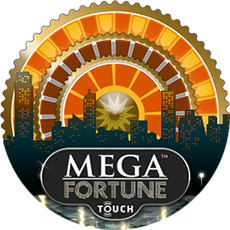In the live version, the player may mark anywhere from 1 through 20 numbers on a card that has 80 numbers arranged in eight rows of ten. The player then takes the card to a keno writer and places a bet that the numbers selected will be among the 20 drawn in the next game. Alternatively, the player sitting in one of the casino restaurants can mark a card and give it with a bet to a keno runner, who takes it to the keno writer and then brings back the ticket. The bet is in multiples of the house minimum — usually $1 nowadays.
After the 20 numbers are drawn, winning tickets are paid according to a table that varies from house to house. For example, a four-spot ticket with $1 wagered might return the $1 if two numbers hit, bring $5 if three numbers hit, and pay $120 if all four come in. But in another casino, the three-number hit might pay $6 and all four $125, and in another the payoffs might be $5 and $110. Because of the variation, no payback percentage is common enough to be called average. Paybacks range from below 70 percent to more than 80 percent.
Way to Bet
Straight ticket: Betting the numbers marked as a single wager is called betting a straight ticket. It’s the simplest way to play, but many players like to bet more combinations. One popular method is the “way ticket.” For example, a player might mark six numbers, circle two groups of three, and mark on the side of the ticket, “2/3, 1/6.” The player then would bet $3 to have $1 wagers on each of two three-spot combinations and on the six-spot.
King ticket: A number circled by itself is the king, which is used in all combinations marked. Let’s say a seventh number in the previous example was circled as a king. The player then could mark “2/4, 1/7” to bet two four-number combinations — the king joining each of the three-number groupings — and the overall seven numbers.
Combination ticket: The player marks several number groupings and plays combinations of them. For example, a ticket with two-, three-, and four-number groupings can be played as 1/2, 1/3, 1/4, 1/5 (the two- and three-number groups together), 1/6 (two- and four-number groups), 1/7 (three- and four-numbers), 1/9 (all three groups). At $1 per game, the ticket would cost $7.
Progressive Jackpots
For higher-number totals played, or for bigger bets, many keno games offer progressive jackpots. Sometimes the progressive jackpot gets high enough that the house is actually offering more than 100 percent payback. Late in 1994, the jackpot on a $2 eight-spot ticket surpassed $200,000 at a casino in Las Vegas. At the $250,000 jackpot cap, the player would have an edge of 17.4 percent. Now that doesn’t mean a player could sit down and win steadily at a 17 percent rate. Results can vary wildly over a short period of time. A player can expect to hit eight-of-eight on the average of once every 230,000 trials, and the casino’s eight-spot was paying nothing below five-of-eight spots, so only 2 percent of all tickets would collect anything at all.
Strategy
Overall, the returns at keno are too infrequent for anyone to play the game seriously. A game or two over breakfast in the casino coffee shop or relaxing in the keno lounge is plenty for many people. But some players on a tight budget enjoy sitting in the keno lounge, being served free drinks and playing a buck at a time as an inexpensive way to spend the day.
For someone who wants to play seriously enough to go from casino to casino, the best strategy is simply to compare pay tables and play at the house that pays the most for the number of spots you select. There is no strategy for selecting numbers — any number is as likely to come up as any of the others.
Video Keno
Video keno is essentially the same game. The same 80 numbers are arranged in the same eight rows on a video screen. You just need to touch the screen to choose your numbers. Pay tables usually are better than at live keno, but, as with online keno, you play the video game much faster and risk more money per hour than with the live game.
Thanks to John Grochowski for his helpful article at “How Stuff Works: How to Play Keno”.


 $7,159,773
$7,159,773
 $1,502,157
$1,502,157
 $5,288,206
$5,288,206